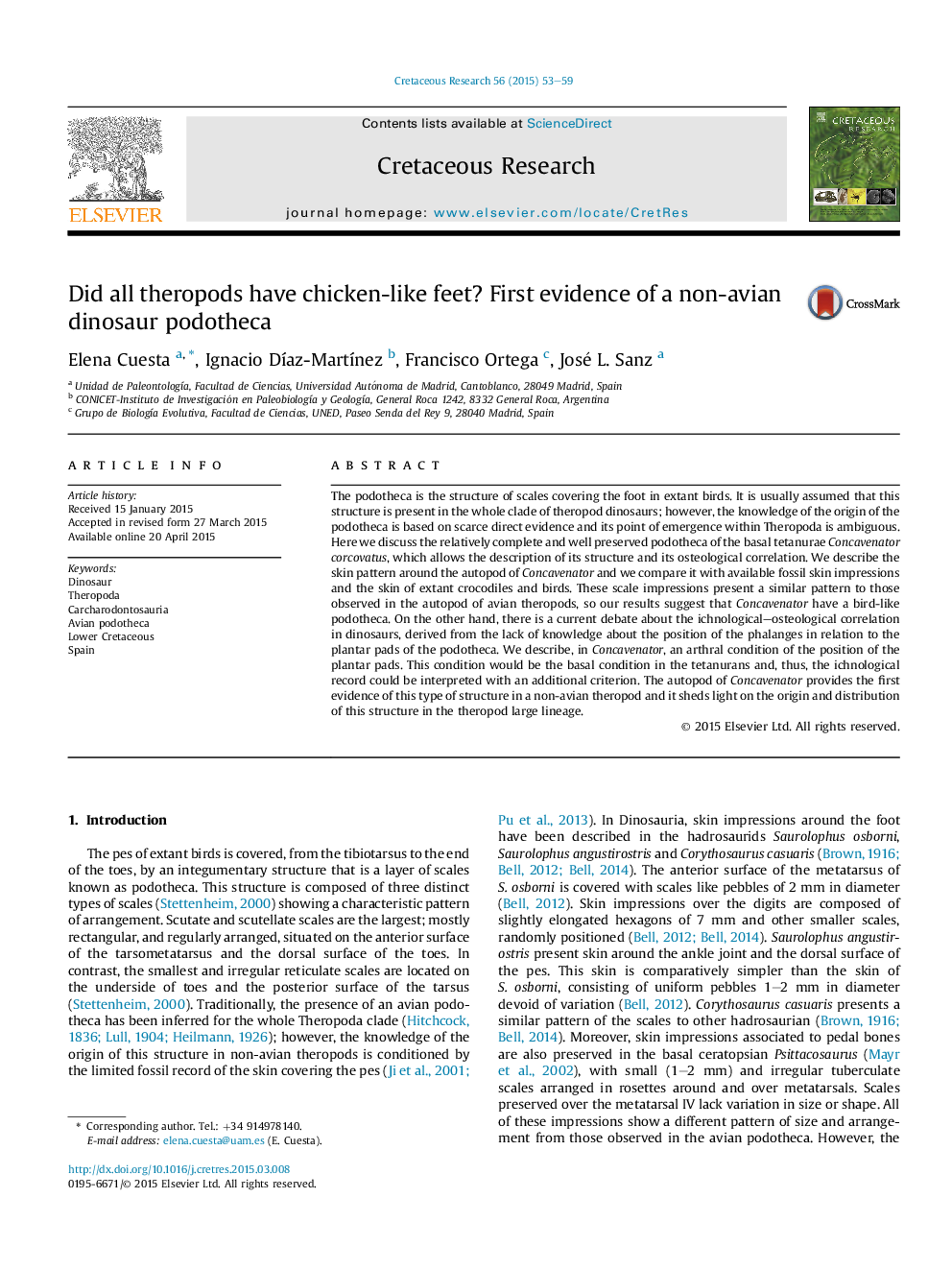| Article ID | Journal | Published Year | Pages | File Type |
|---|---|---|---|---|
| 4746923 | Cretaceous Research | 2015 | 7 Pages |
•We describe the first evidence of a podotheca in the dinosaur fossil record.•Concavenator supports the presence of the avian podotheca for the Theropoda clade.•The arthral condition is primitive in Theropoda.•The ichnological record could be interpreted based on the new evidence.
The podotheca is the structure of scales covering the foot in extant birds. It is usually assumed that this structure is present in the whole clade of theropod dinosaurs; however, the knowledge of the origin of the podotheca is based on scarce direct evidence and its point of emergence within Theropoda is ambiguous. Here we discuss the relatively complete and well preserved podotheca of the basal tetanurae Concavenator corcovatus, which allows the description of its structure and its osteological correlation. We describe the skin pattern around the autopod of Concavenator and we compare it with available fossil skin impressions and the skin of extant crocodiles and birds. These scale impressions present a similar pattern to those observed in the autopod of avian theropods, so our results suggest that Concavenator have a bird-like podotheca. On the other hand, there is a current debate about the ichnological–osteological correlation in dinosaurs, derived from the lack of knowledge about the position of the phalanges in relation to the plantar pads of the podotheca. We describe, in Concavenator, an arthral condition of the position of the plantar pads. This condition would be the basal condition in the tetanurans and, thus, the ichnological record could be interpreted with an additional criterion. The autopod of Concavenator provides the first evidence of this type of structure in a non-avian theropod and it sheds light on the origin and distribution of this structure in the theropod large lineage.
